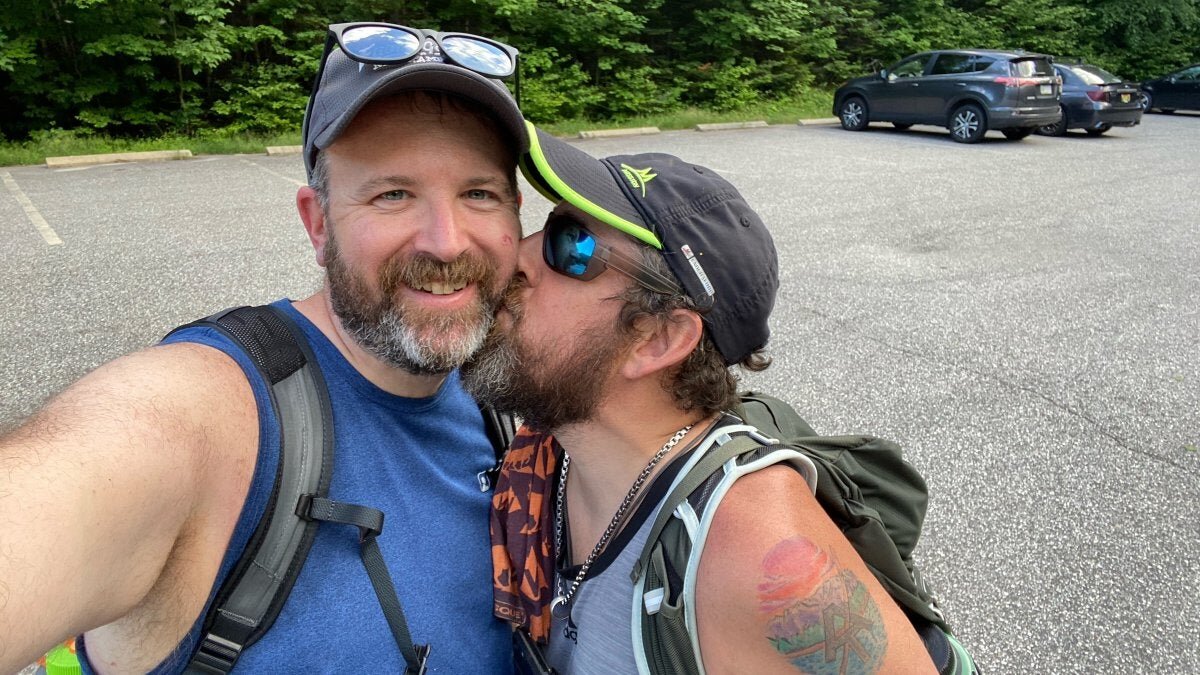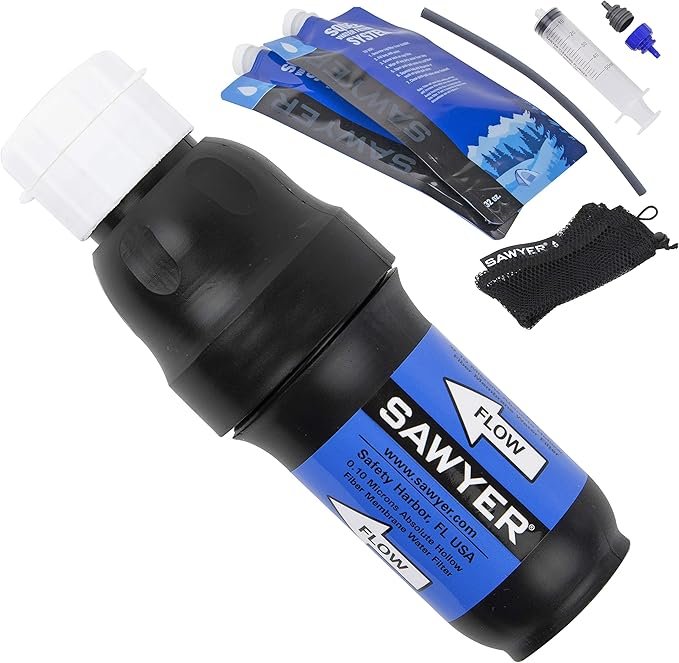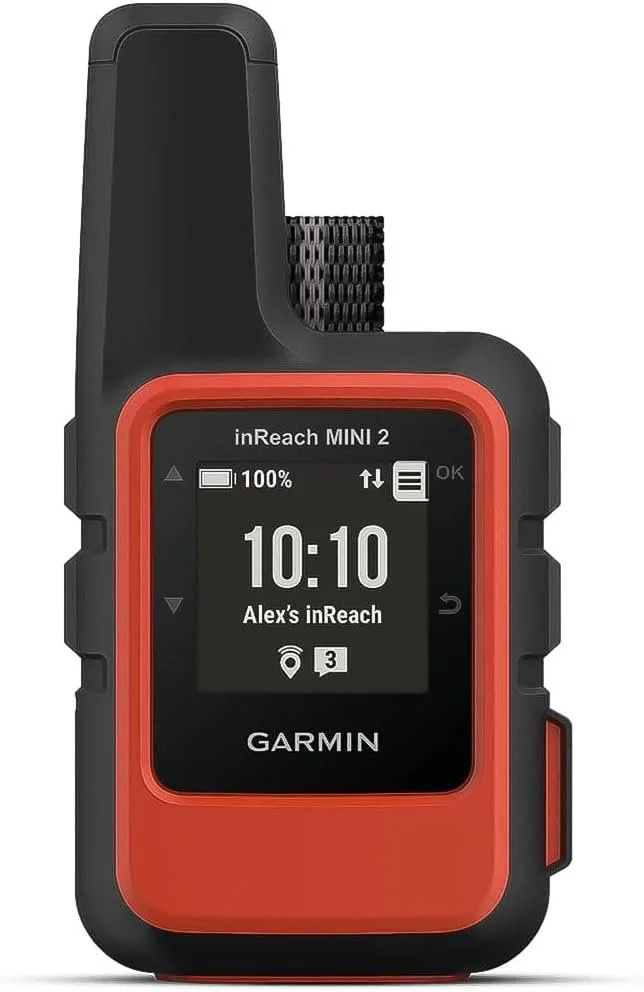The Ten Essentials for Day Hiking, a Comprehensive Guide
Ten Essentials for Hiking: Day Hike Gear Checklist
The Ten Essentials for Hiking include water, food, shelter, navigation, clothing, knife, headlamp, fire starter, sun protection, and first aid. These items will help you you have a more enjoyable hike when adventuring on trail, as you’ll be better prepared to handle the unexpected.
Being prepared with these ten essential items for hiking is crucial for your safe and enjoyable outdoor experience. The wilderness is unpredictable, and it's essential to have the necessary tools to overcome any challenges that may arise. Carrying a map, compass, and GPS ensures that you stay on the right track and reach your destination without getting lost. Packing enough food and water is vital to stay hydrated and fueled during long hikes, preventing fatigue and potential health risks. Additionally, having proper clothing and gear protects against harsh weather conditions and potential injuries. Carrying a first-aid kit helps to address minor injuries before they worsen. Being prepared with essentials not only ensures your safety but also allows you to enjoy the wonders of nature without unnecessary distractions or worries.
The 10 Essentials for Day Hiking
Water
The Sawyer Squeeze is our favorite water filter for hiking and backpacking - it’s relatively inexpensive, lasts a long time with basic maintenance, and is easy to use.
There’s nothing more essential than having enough water for your hike. ALWAYS carry enough water for your adventure and also always carry a way to treat water while you’re on the trail to make sure you never run out. Consider all water in the backcountry unsafe to drink without treatment to avoid unnecessary stomach problems.
It's not just about quenching your thirst, but staying properly hydrated is vital for your health and safety. Our favorite water bottles and water filters for the trail are:
A good rule of thumb is that you’ll need at least half a liter of water per hour of activity. This estimate can vary depending on various factors such as temperature, exertion level, and individual body needs, but it’s a good place to start.
Remember, dehydration can lead to fatigue, muscle cramps, and even heatstroke, so it's important to prioritize your water intake during your outdoor excursions. Be proactive and take care of your hydration needs, ensuring you have enough water.
We always carry and use hydration supplements. They are not a replacement for ensuring you have enough water for your hike, but they replenish vitamins and minerals that you’re using during the hike and can help stave off cramps and other discomforts. Some of our favorite hydration supplements include:
There are many different kinds of hydration supplements and it took us a while to find ones that we liked the taste of and that helped us the best. We’d suggest you experiment a bit to see what works best for you.
Food
Lenny and Larry’s Complete Cookie is a good option for a trailside meal - each cookie has 16g of plant protein and are over 400 calories - making for a compact and tasty way to refuel on the trail.
Always pack an ample supply of food for any hiking adventure, regardless of its duration. Even if you anticipate a short and leisurely trek, it's crucial to pack more food than you think you'll require.
This applies to both physically demanding hikes and those that may end up being longer than originally planned. Ensuring you have enough nourishment readily available is essential for preserving your energy levels and staying motivated throughout the hike.
While the extra ounces might seem extraneous, they bring immeasurable peace of mind and enable you to sustain yourself for any unforeseen circumstances that may arise along the trail. Some of our favorite trail foods include:
In addition, we almost always have M&Ms, cookies, and a Pop-Tart in our meal kit, along with a sandwich too when we’re going by a deli on the way to our hike.
Shelter
The SOL Emergency Bivy only weighs 4.5 ounces, but can make the difference in an emergency situation.
For day hiking, we’re talking about ensuring you always have some sort of an emergency shelter with you - and that doesn’t have to be a full sized tent for day hikes
We have found that the easiest way to achieve this is by carrying a lightweight, but warm emergency bivy.
This invaluable piece of gear serves multiple purposes, proving useful not just during unplanned overnights, but also in emergency situations where its primary function is to ensure the warmth and comfort of an injured person.
Weighing in at about 4.5 ounces, this compact item won't burden your backpack, but instead, it will give you some peace of mind throughout your hiking adventures.
Navigation
Understanding where you are, where you are going, and how to get back to where you started are absolutely crucial in every single outdoor adventure. It's a fundamental aspect of being prepared and ensuring a safe and successful experience. In order to meet these essential needs, there exist various tools, each of which holds its own significance and provides an invaluable layer of redundancy. These tools serve as a reliable backup plan in case of dead batteries or technological failure, ensuring that even in the most challenging situations, you can rely on them to navigate your way back to safety.
The Garmin InReach Mini offers satellite connectivity with great battery life.
It might feel old school, but you should ALWAYS carry a printed map with you, along with a compass (that you know how to use). Yes, you might have a map on your phone or GPS device but batteries die, devices break, and you can lose your phone (it’s happened to us). A quality map won’t run out of batteries or break and a compass is indestructible during regular use.
Once you have the map and compass in your backpack, then it’s time to expand your navigation tools. A GPS device with maps (which can be your cell phone or a dedicated GPS device) and a personal locator satellite beacon/communicator (such as the Garmin inReach) will increase your ability to navigate and locate yourself in the woods. We carry an inReach on all trips, as it provides satellite texting abilities, along with an SOS button in a true emergency. We also use mapping tools on our iPhones - AllTrails, and FarOut most frequently, but there are plenty of other mapping apps such as Avenza Maps (which carry the NYNJTC Catskills maps, which we love as paper maps).
Looking to get a little fancier? Consider a GPS watch. There are a ton out there that range in price from reasonable to exorbitant and offer all kinds of different features that most day hikers will likely only use occasionally. The two of us have settled on Garmin Instinct and Garmin Forerunner smart watches. Both the Instinct and the Forerunner offer GPS features such as tracking, health tracking, and a ton of other features. The best part about the Instincts though is after seven years on both watches, they are still ticking without a scratch. Jeff only upgraded to the Forerunner 255 for a few new features and it’s been going strong for more than a year now without any damage or scratches.
Clothing
There’s no perfect clothing kit to pack every time in your backpack because every hike is going to be different, but you should always have extra clothes to address the changing conditions you may experience and to stay warm should you need to spend the night in the outdoors.
Even on the warmest summer days, the weather, especially in the mountains can get chilly or an unexpected rain can come and soak everything you’re wearing. For our backpacks in the summer months we generally carry a dry t-shirt, a change of socks, a light rain shell, and a pair of light gloves. We also usually pack a long-sleeve hooded sun shirt, which can double as a long-sleeve base layer if things turn unexpectedly chilly. In Spring, Fall and Winter we generally carry a complete change of clothes, along with different base layers, fleece, and jackets depending on just how cold it’s going to be and what the weather conditions are.
Knife or Multi-Tool
The Leatherman Micra multi-tool is a great option that will serve you well on many hikes.
You always want to have some sort of knife with you on a hike because you'll find 101 uses for it and curse the day that it's missing. From cutting rope and opening packages to preparing food and even making makeshift repairs, a reliable knife becomes an indispensable tool for any hiker.
It really comes down to personal preference as to what kind of knife you want to carry. We both carry basic, lightweight locking pocket knives at the moment, but in the past we’ve carried the small Leatherman multi-tools, and simple pocket knives.
Headlamp
You never know when a hike will take longer than expected and that is why it is critical to always carry a reliable headlamp with you on every hike. Whether it's due to challenging terrain, unexpected weather changes, or simply losing track of time while marveling at the views, having a trustworthy light source can make all the difference in ensuring a safe and enjoyable hiking experience. Without it, navigating through the darkness can be not only difficult but dangerous, increasing the risk of tripping, getting lost, or encountering unforeseen obstacles. So don't forget to pack a headlamp!
There are tons of different kinds of headlamps available, in all kinds of different styles, different weights, brightness, battery life, and so on. For many years we both used Energizer LED Headlamps, which are inexpensive, fairly lightweight, and comfortable to wear. Recently we both upgraded to Petzl Swift RL Headlamps, which are lighter, brighter, and rechargeable.
Fire Starter
Having the ability to start a fire quickly and easily is not only important when you find yourself in an emergency situation, but it also proves valuable when you're out in the wild, relying on a stove to cook your favorite trail meals or simply seeking warmth by igniting a comforting campfire.
For us, we both always carry Bic lighters in our packs (in a zip loc bag - wet bics don’t work) and we also always have a few fire starters in the bag too, since it’s a heck of a lot easier to get a fire started that way.
Sun Protection
When you’re out hiking, whether you realize it or not, you’re going to be in the sun an awful lot more than you normally are - even on cloudy days, and even under a forest canopy. Sunglasses, sunscreen, a good hat, and sun protection clothing all should be part of your plan for any hike.
We’re fans of Goodr sunglasses, which at only $25 a pair, are a real bargain considering the good quality of the sunglasses (you also won’t feel guilty when you inadvertently lose them or sit on them as you do with all sunglasses).
We generally go with a baseball hat - sometimes a performance one, sometimes just a Hiker Trash Husbands hat.
For sunscreen we usually go with at least 30 SPF and look for a spray on suntan lotion that’s waterproof. Note that even waterproof sunscreen sweats off eventually - so you’ll have to reapply. We usually also carry a small squeezable bottle of sunscreen cream to cover the spots that aren’t easy to spray.
Clothing wise, we both always carry a long-sleeve sunshirt. There are models from almost all outdoor gear retailers. We have the Outdoor Research Echo Hoodie, the Patagonia Capiline Cool Daily Hoodie, the Cotopaxi Sombra Hoodie, and the REI Sahara Hoodie (maybe we have a sunshirt addiction).
First Aid
A first-aid kit that can address cuts, blisters, and other injuries is key to carry in your backpack. You can buy a ready made kit, or just make up on yourself. Either way, make sure it’s in your backpack, you keep the supplies fresh, and you know how to use what you have in the kit.
More Hiking Advice and Hiking Gear Recommendations
Some product links are affiliate links and we earn from qualifying purchases. Others are links through the Amazon Influencer program and as an Amazon Influencer, we earn from qualifying purchases. Still others, we just want you to know about some good gear we enjoy!
Important Hiking Considerations:
Weather: Check the weather forecast before your hike and be prepared for changes in conditions.
Safety: Some sections of the trail can be steep and rocky, so use caution and watch your footing.
Leave No Trace: As with any outdoor activity, remember to follow the principles of Leave No Trace. Pack out any trash, stay on the trail, and be respectful of the natural environment.
10 Essentials for Day Hiking FAQ
Q: What are the 10 essentials of hiking?
A: The 10 essentials of hiking are: navigation, headlamp, sun protection, first aid, knife, fire, shelter, extra food, extra water, and extra clothes. These items help you stay safe and prepared in the backcountry.
Q: Why are the 10 essentials important for day hiking?
A: The 10 essentials are important because they prepare you for unexpected situations like injuries, getting lost, sudden weather changes, or delays on the trail.
Q: Do I need to carry all 10 essentials on every hike?
A: Yes, it's a good idea to carry all 10 essentials—even on short hikes—since emergencies can happen at any time, and conditions can change rapidly outdoors.
Q: How can I pack the 10 essentials efficiently?
A: Use a small daypack and choose lightweight, compact versions of each item. Distribute weight evenly and group items by function to stay organized.
Q: Who created the 10 essentials list?
A: The 10 essentials were popularized by The Mountaineers, a Seattle-based outdoor education group, to promote safe and responsible hiking and mountaineering practices.










